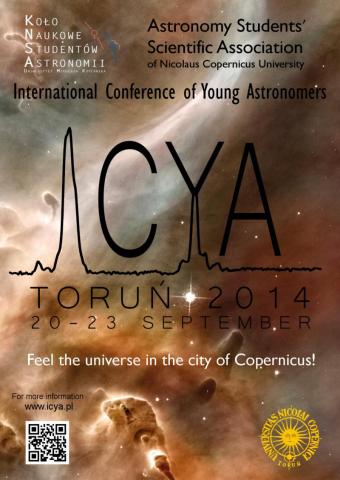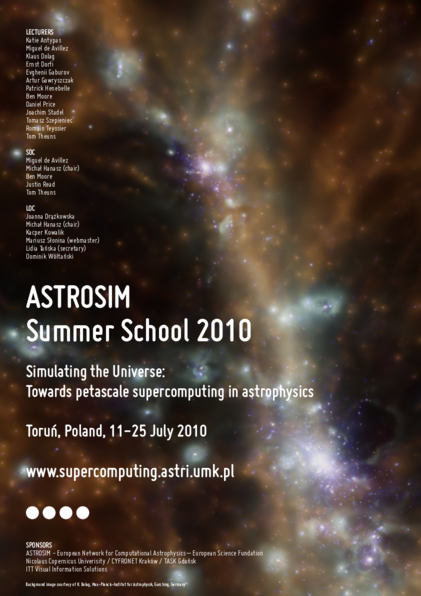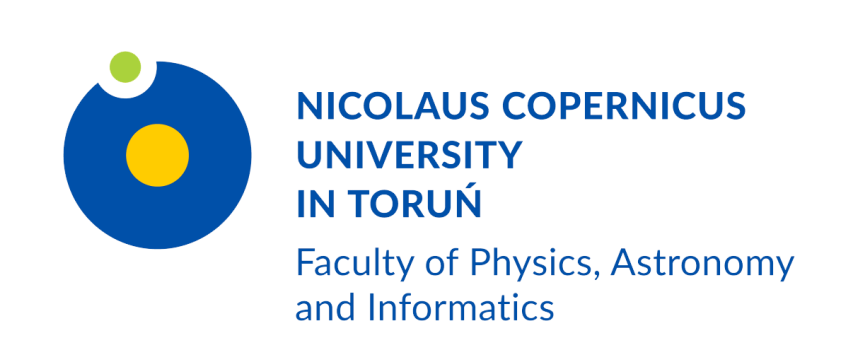Conferences
and summer schools organized with contribution of Institute of Astronomy, NCU
SHOCKS 2016 Interstellar shocks: models, observations & experiments
Shocks are ubiquitous in the interstellar medium, including protostars, evolved stars, supernovae blast waves as well as spiral arms. On small scales, shocks have a strong impact on the local physical conditions, the gas chemistry and they deeply affect dust grains, through sputtering of their ice mantle or their refractory cores, or even through shattering in the fastest shocks. On larger scales, shocks produced by spiral arms can induce colliding flows, triggering the formation of molecular clouds. The cumulative impact of shocks influence the evolution of molecular clouds by injecting supersonic turbulence, and in turn their star formation efficiency, hence play a major role in regulating the star formation rate of galaxies. Shocks are therefore relevant for many astrophysical and chemical processes and their detailed understanding, which needs a combination of observations, models and laboratory experiments, has a wide range of applications.
This meeting will cover all aspects of shocks in the interstellar medium: from microphysics to impact on galaxy scales. The program of the workshop reflects this broad range of topics related to interstellar shocks:
- Observations of shocks and related chemistry in protostars, supernovae remnants and evolved stars from UV to sub-mm
- Models of shocks, with a special focus on the impact of UV irradiation, the shock geometry, and the role of grains
- Laboratory studies of shocks, jets and sputtering phenomenon
- Shocks in stellar cluster and at molecular cloud scalesThe objective of the meeting is to bring together astronomers with diverse observational, experimental, and theoretical backgrounds, to foster new collaborations, and to identify the major open questions relating to interstellar shocks.
International Conference of Young Astronomers (ICYA)

International Conference of Young Astronomers is a multinational version of Polish Nationwide Seminar of Astronomy Students. Our conference is addressed to all astronomy students who would like to tell us about their researches and important theories in astronomy or just want to listen about this incredible field of science. All of topics can be presented – Solar System, exoplanets, stellar, galactic and extragalactic astrophysics, cosmology and even more. (http://www.icya.pl)
44th Young European Radio Astronomers Conference (YERAC)

YERAC has been held annually since 1968 and has enabled many graduate students and new post-docs or other workers in radio astronomy to meet each other and present their current work. This year we will continue the tradition of giving the early-career scientists an opportunity to present their research. Therefore, we encourage all participants to give a talk about some aspect of their work. YERAC will take place in Toruń for the third time. The first one was in 1976 and the second in 1987. The city, where the Nicolaus Copernicus was born, is an excellent place where the main aim of YERAC can be fulfilled: “To bring together young radio astronomers working at European institutes, observatories, laboratories and universities in order to provide them with early opportunities for transborder interactions with peers.” as written in “Conception of YERAC” by Harry van der Laan (www.yerac.org). The conference costs are supported by RadioNet3 and Toruń Centre for Astronomy. (http://yerac2014.astro.uni.torun.pl)
Astrosim Summer School 2010 – Simulating the Universe: Towards petascale supercomputing in astrophysics

In the framework of the ESF ASTROSIM project, we organize an advanced summer school on computational astrophysics at Nicolaus Copernicus University, Toruń, Poland, 11-25 July 2010. The school aims to bring together PhD students, young post-doctoral researchers and experienced computational astrophysicists to provide an integrated overview of numerical and computational techniques applied in numerical simulations of fluid dynamical and N-body astrophysical systems. The school will offer a hands-on approach to astrophysical numerical simulations, with computer laboratories and access to large computer clusters in addition to lectures.
II Astronet Annual Meeting
Extrasolar Planets in Multi-Body Systems: Theory and Observations
An international conference on extra-solar planets in multi-body systems is organized in Torun (Poland), August 25-29, 2008 by the Torun Centre for Astronomy of the Nicolaus Copernicus University, the Paris-Meudon Astronomical Observatory (LUTH) and the Nicolaus Copernicus Astronomical Center (Polish Academy of Sciences, Warsaw). This conference is sponsored by the AstroPF program, the French-Polish collaboration in astrophysics (http://astropf.camk.edu.pl/).
8th EVN Symposium 2006 – Exploring the Universe with the real-time VLBI

The 8th EVN Symposium was hosted by Toruń Radio Astronomy Observatory which is a part of Toruń Centre for Astronomy of Nicolaus Copernicus University in Toruń, a mediaeval city (population 210.000) in northern Poland included in the UNESCO World Heritage List.

 Piwnice k. Torunia, 87-148 Łysomice
Piwnice k. Torunia, 87-148 Łysomice